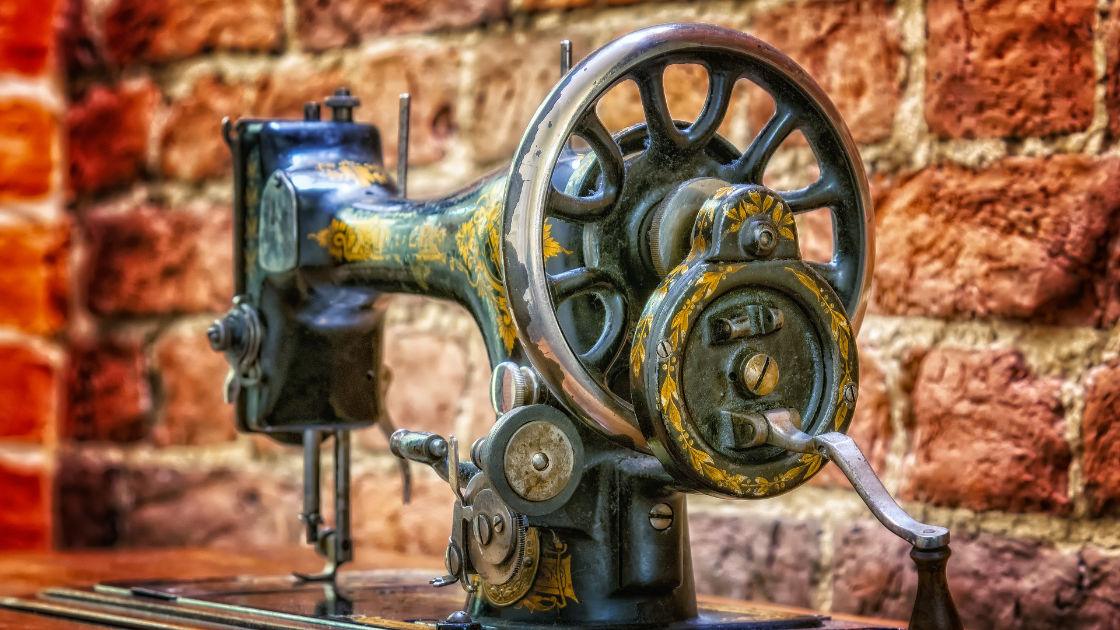From time to time, historic interpreters hear a question they haven’t been asked before. When I receive a question I’ve never considered, I always find myself saying, “That’s a great question,” as a way to stall while I consider the answer. This series is about some of those great questions.
Yesterday while learning the presentation for the New (1890s) Kitchen, one of the visitors asked about the sewing machine in the corner. “When did people start having sewing machines in their homes?” Great questions but neither the interpreter or myself knew for sure. Here is a little bit about personal sewing machines.
The first machine that used a needle and shuttle to sew cloth was invented in 1790 for working leather and canvas. Due to poor marketing it wasn’t widely known. The first United States patent for a sewing machine was given to Walter Hunt in 1832. (He would go on to invent the safety pin in 1849.)
In France, Bathelemy Thimonnier had invented a sewing machine and had a factory with 80 machines to sew uniforms for the French Army.
By the 1850s sewing machines had developed many of the functions we are familiar with today such as sewing forward, backwards, up, and down. The cloth at this point was generally held vertical across the machine. (Many earlier versions had you hold the cloth horizontally across the machine.) In 1851 Isaac Merritt Singer added a foot to the sewing machine to help hold fabric in place while working. The 1850s saw a series of patent wars rage their way through courts across the country between major inventors and company owners.
Isaac Merritt Singer and Edward Clark played a big role in bringing the sewing machine into homes across the country. In the 1850s sewing machines cost about $125 (the average family’s income was $500 a year). Singer and Clark allowed people to purchase a sewing machine in monthly installments of $3 or $5.
By the late 1860s sewing machines were becoming much more reasonably priced. Sophie Best of Minnesota wrote to her parents, “It is wonderful what progress civilization makes! My head is filled with those pretty sewing machines that are being bought by so many families and are so delightful to have! Some people have been able to get these little fairies for between $10 and $60. The stitches they make are so strong, so pretty, and so easy to make.”
Sewing machines were rather controversial for a time. Women and men generally spent a lot of time sewing by hand. It could take up to 14 hours to sew a man’s dress shirt by hand. With a machine that time could be cut down to just 1 or 2 hours. But what would people do with all this new free time? A common belief throughout history was “idle hands do the devil’s work.” People could get into trouble without work to do. Many people became unemployed because of the sewing machine for a time. There were factories where people used to hand sew clothing. With the sewing machine you needed less people to produce the same amount. So until the factory could buy enough machines for all the workers, people were laid off. There was also a fear that women wouldn’t be able to learn a complex machine like a sewing machine.
Many of the sewing machine manufacturing companies hired women to demonstrate the machines at fairs and in store fronts and women were highlighted in advertising. Many people who owned sewing machines took in mending or custom work and thus earned money and filled leisure time with projects. Generally if someone has some down time, they fill it with something.
